Cognac is not considered a drink for everyday consumption. A big family celebration, a holiday, a significant meeting is the lot of a divine gift. An evening spent in the company with a glass of cognac is remembered for a long time as an extraordinary event in a series of ordinary days.
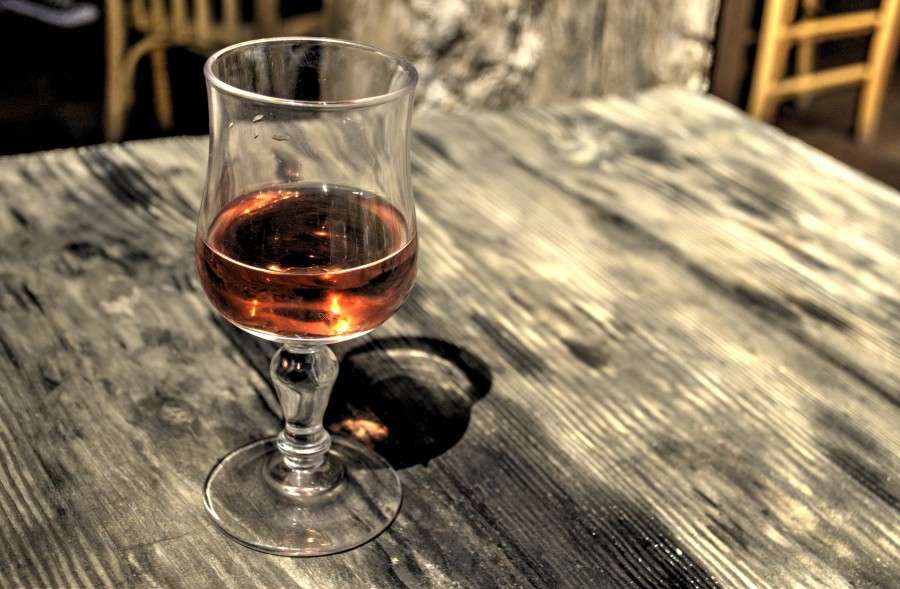
Which brand to choose, so that later you will not regret either the money spent, or the spoiled mood, what advantages and disadvantages a certain brand has, what to look for when buying. The editors of the site "bestx.htgetrid.com/en/" prepared recommendations and advice on these issues for you.
Content
About the history of occurrence
The process of natural fermentation of plant materials containing sugar has given humanity a "pernicious" habit of drinking alcohol. In time, this refers to the very first reasonable steps of a primitive communal society. The ancestors of alcoholic beverages were perceived by man, most likely, as "divine" blessings sent down from heaven. They helped relax the psyche and improve mood.
The man quickly understood the medical component of alcohol. Alcohol worked as a means of primitive anesthesia and disinfection, stimulated the release of muscle tension, and contributed to the elimination of various body dysfunctions. However, the taste and quality of the surrogates depended on the food raw materials that were fermented, and were hardly at their best.
Ancient sources
Modern human history begins with the Bible, the history of cognac is no exception.
Genesis 9:20 states - "Coming out of the ark, Noah took up the cultivation of the land, planted a vineyard and invented the art of making wine." This idea came to him on Mount Ararat. Therefore, may the residents of the French city of Cognac forgive us, we give the palm tree of primacy of creating a drink to our friends from sunny Armenia, next to which is the famous mountain.
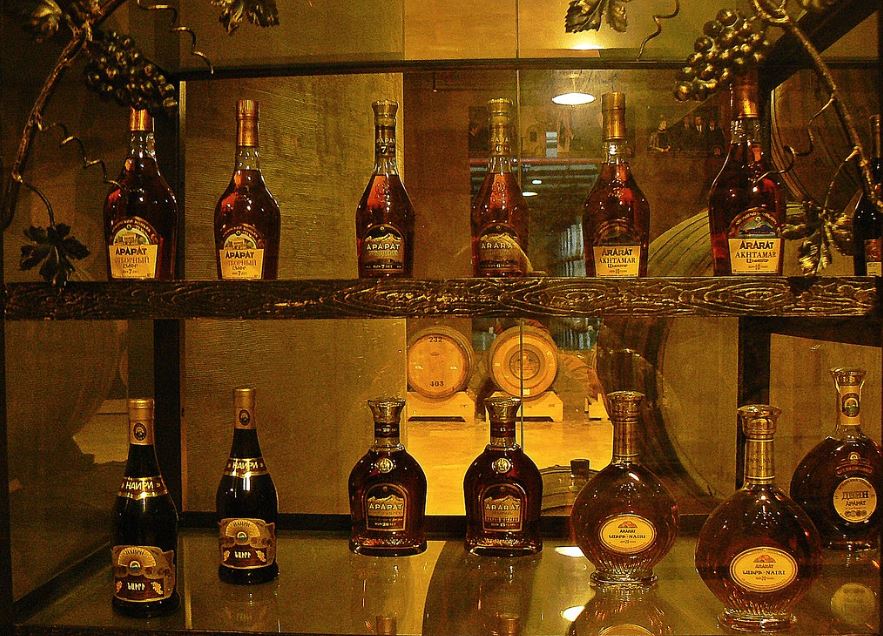
It all started with grape juice. Some interpreters of the history of those times argue that the wine was then not stronger than juice, others have a different opinion. But you do not need to graduate from academies to make sure that any juice left warm, fermented, after a few weeks acquires the characteristic properties of an alcohol-containing product, alcohol is born in it. But only from grape juice delicious wine is obtained.
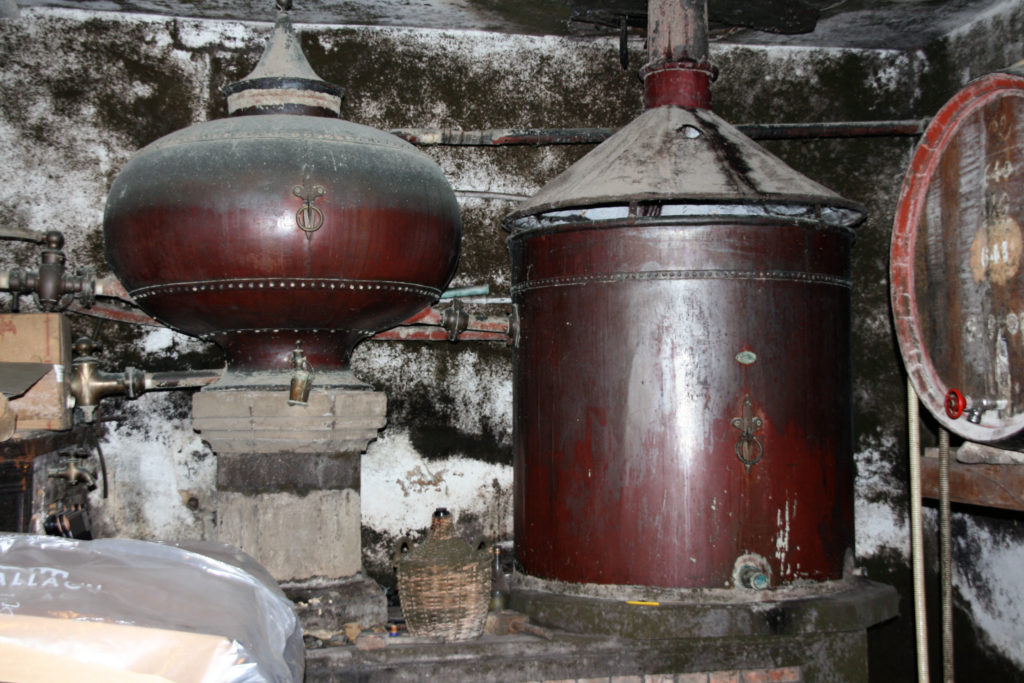
The next task of distilling wine into a liquid containing a large percentage of alcohol has become a technological problem of preserving raw materials. Young wine, if stored unsuccessfully, turned into vinegar and lost its strength. Distillation (distillation) of wine, known from ancient times, increased the strength several times and reduced the volume of the drink. At the same time, its taste acquired a new sound, depending on the type of wood used to make barrels for storage. Distillates did not spoil in them, transportation costs for transportation of distilled wine were reduced.
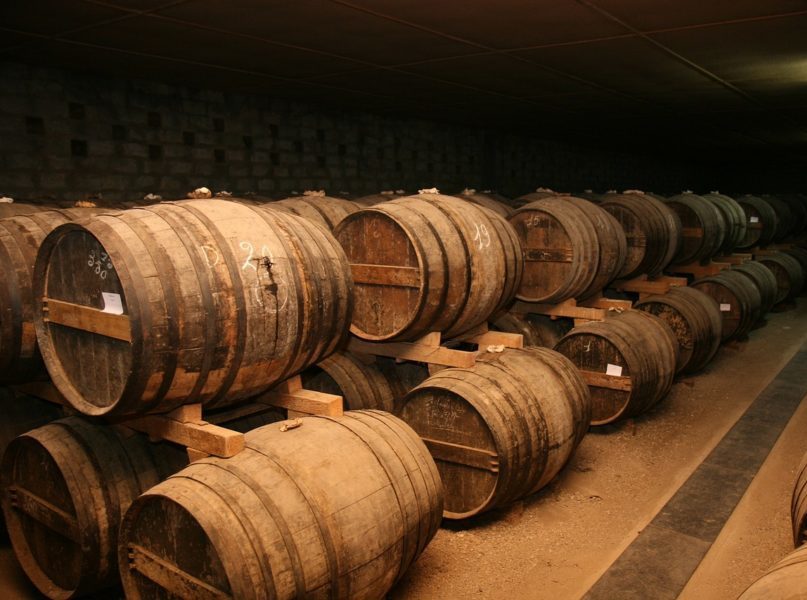
Cognac Middle Ages
This technological breakthrough contributed to the increase in vineyard and wine production in Europe during the Middle Ages. The flip side of the coin was an increase in the consumption of strong alcohol.
The product of the distillation of wine is called brandy. Similar drinks in different regions of the world have their own names - chacha in the Caucasus, Mediterranean grappa and rakiya, arak in the Middle East and Central Asia. In Europe, from the end of the 16th century, wines and brandies were given names from the province where they were produced. France was especially distinguished by this. This is how the famous champagne, Bordeaux, Burgundy, Armagnac, etc., and the cognac named after the city in the Grand Champagne and Petite Champagne regions appeared.
The French winemaker improved the process of distilling wine, discarding light and heavy fractions and bringing the brandy strength to 70 revolutions, that is,%. Then he poured it into oak barrels for storage. Depending on the region of germination of oak, its wood gave a specific aroma to the drink. Long-term aging in barrels improved these indicators.
Therefore, it became necessary to blend spirits from different places of production to obtain a harmonious bouquet. Comfortable alcohol strength for ingestion is about 40%. An additional task was to reduce the strength of distillates by adding slightly alcoholized water, a small dose of caramelized sugar and various additives allowed by the production technology.
The result of long "cultivation" is a real high quality product. The masters of this business, investing their souls, improved the technology, passed on their experience to the next generations of their followers. Today this is evidenced by the popularity of the best "models" of the world market.
How to use it correctly
Cognac is the only alcoholic drink that has overgrown with so many legends about its creation, purpose and ways of drinking, like no other.
It concentrates information, and the next time you start to smell the scent in the glass, positive memories begin to surface. Drinking cognac is poetry, so you need to "read" it. And for reading, you need an appropriate atmosphere and paraphernalia.
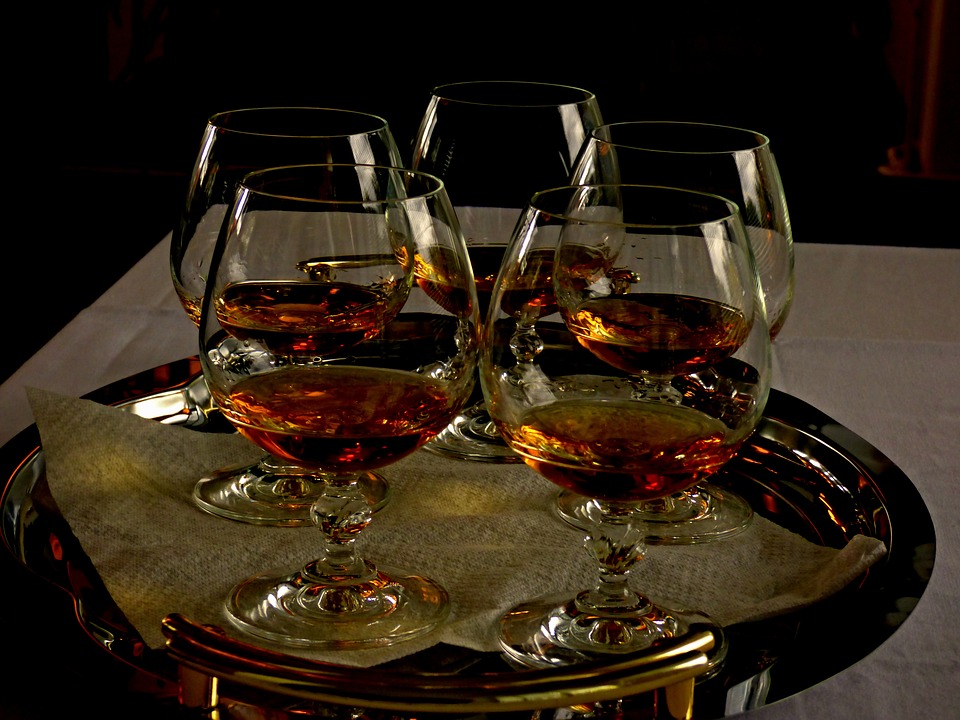
It all starts with the dishes. Traditionally, it is believed that this requires a glass in which the surface area of the upper cut is two times less than the surface area of the beverage poured into it. This intensifies the aroma emanating from the glass, and the taste buds begin to work faster.
The function of consumption and the pleasure of visual perception of the drink, its color and consistency are closely related. Transparent, dense, "oily" liquid slowly flowing down the walls of the glass in jets also characterizes the degree of aging of the drink.
Historically, cognac is not a snackable drink. You can accompany it according to your mood with various fruits, cheeses, snacks. But you can't drink it down, eat it with citrus fruits or use it with ice. This will already be called a cocktail.
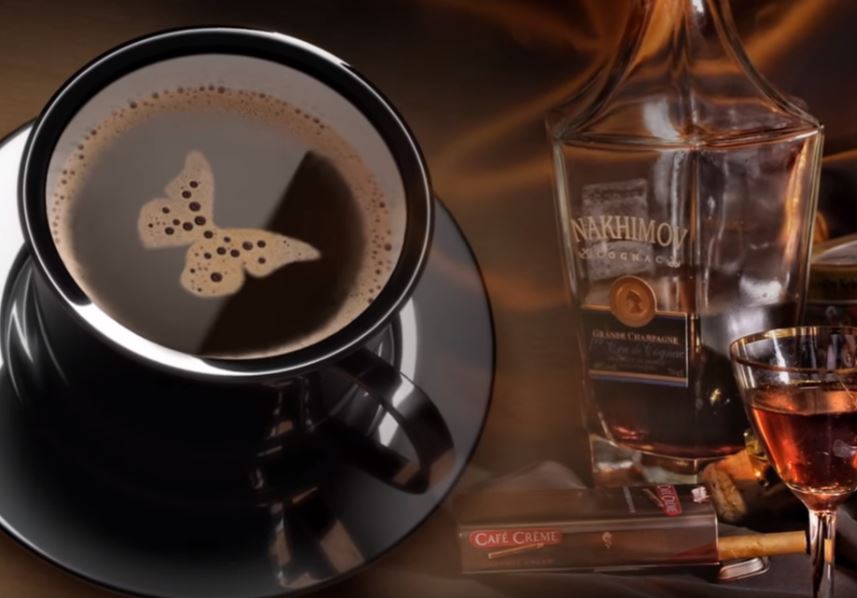
A cup of strong coffee is combined with cognac, like a wedding and flowers.
On the issue of cognac paraphernalia, countries as far apart from each other and from the drink as Cuba and Great Britain have said their word. The legend of British politics, Prime Minister Winston Churchill, a fan of cognac and Cuban cigars, thanks to marketing tricks, became the hero of the famous story about the Armenian "Ararat".
Allegedly, after the Tehran Conference, where he treated Churchill and US President Roosevelt to the Armenian "Ararat", Stalin began to send it to the British Prime Minister regularly in boxes. True or not (no glasses are visible in the photo of those times), no one knows, but the popularity of the Armenian drink has acquired fantastic proportions.
We must pay tribute, despite the harm of smoking, that for a lover, a good cigar, in addition to cognac, turns its consumption into a “sacred rite”.
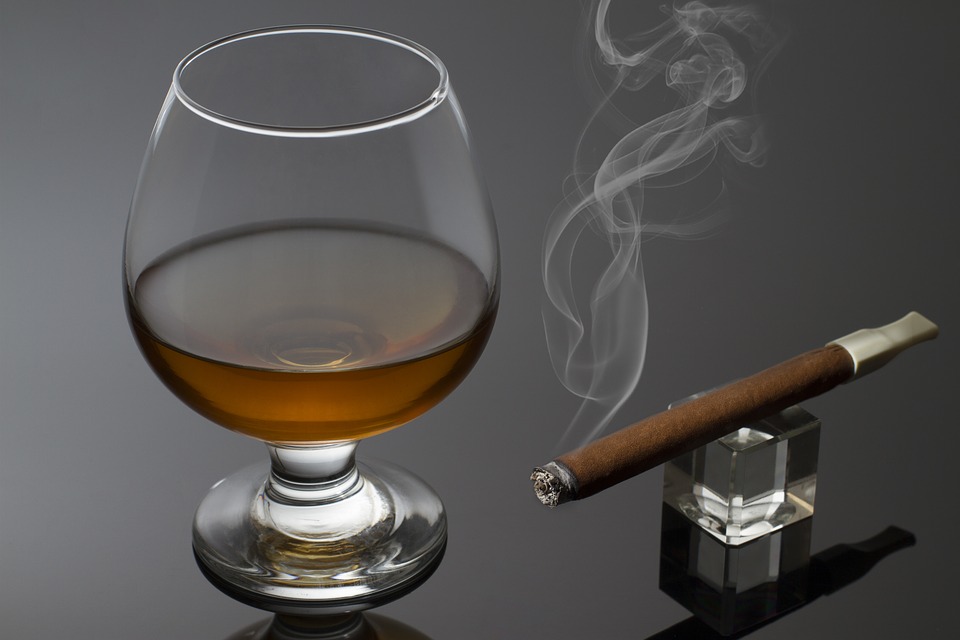
How not to make mistakes when choosing a brand
In the 20th century, the historical halo around cognac gradually gave way to marketing policy.The best producers began to actively engage in advertising to increase the production of the drink. Non-traditional regions began to follow them.
The counters of Soviet stores began to fill up, along with famous brands from Armenia, brands from Georgia, Abkhazia, and Azerbaijan, the traditional wine-making republics. Inexpensive drinks from Ukraine and Kazakhstan appeared.
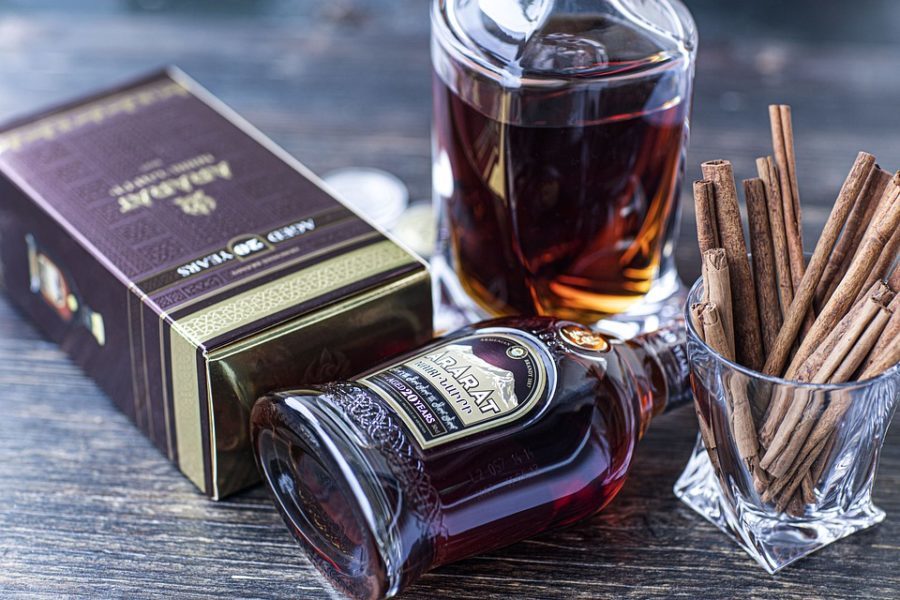
In the 90s, some cognac factories went bankrupt, and in order not to perish they followed the path of reducing the cost of production, replacing quality with profit. The consumer immediately caught this trend and a prejudice arose that everything that is produced in the post-Soviet space is made from tinted alcohol. In reality, the percentage of unscrupulous products is not that great.
Whichever brand you meet is American, Azerbaijani, Ukrainian, Georgian, Abkhazian, Kazakh, the main thing is to know which company to choose. There are enough unscrupulous businessmen everywhere.
When choosing a brand, one should take into account the complex functionality, including the architecture of the bottle, the material of the cork, the color of the drink, the aroma, the bouquet of taste and the price. Please note that the label must contain the name of the country of origin of the wine material.
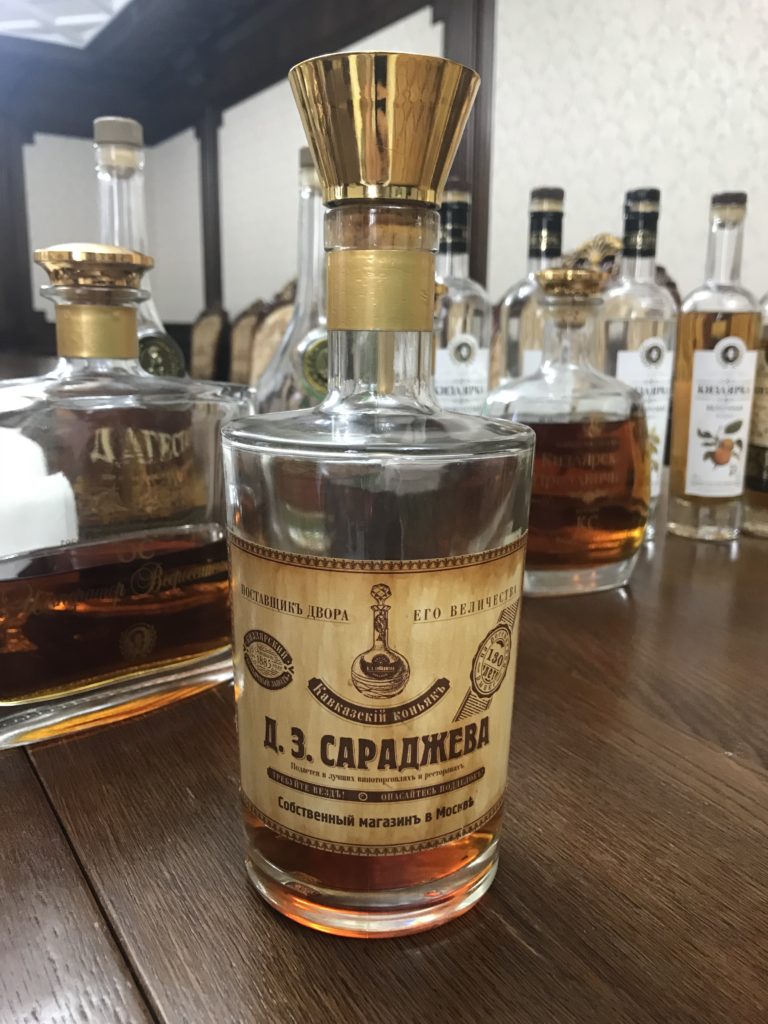
Focus on cost. A high-cost brand cannot be delivered to retail at a low price. This is the first indicator of quality, but it is not guaranteed.
Rating of quality cognacs in 2020
| Trademark | Manufacturer | Price, rub) |
|---|---|---|
| Elder | CJSC "Stavropol Wine and Brandy Factory" | 450 |
| Noah Araspel | OJSC "Ararat" | 520 |
| Dagestan | "Izberbash Brandy Factory" | 540 |
| French standard | LLC "Sordis" | 540 |
| Kinovsky | JSC "Moscow Wine and Brandy Factory KiN" | 580 |
| Troekurov | JSC "Pearl of Stavropol" | 580 |
| Kvint | CJSC "Tiraspol Wine and Brandy Factory KVINT" | 620 |
| Koktebel | LLC "KD Koktebel" | 640 |
| Three stars | "Kizlyar Brandy Factory" | 650 |
| Old Kakheti | LLC "Kakhetian traditional winemaking" | 750 |
| Bakhchisarai | JSC "Bakhchisarai" | 500 |
| Martell V.S. | "Martell & Co" | 1300 |
| Remy Martin V.S. | "E. Remy Martin & Co" | 1400 |
| Hennessy V.S. | "Jas Hennessy & Co" | 1500 |
Elder three
It has been produced by the Stavropol VKZ from Spanish cognac distillates since 2004. For their maturation, French oak barrels are used. As a matter of fact "branch production", European equipment and technologies are used.
The blend is made by local experts, which gives it the specific tones of sherry grape brands. The soft, smoothing effect of the action is enriched with hints of nuts and prunes. A light bitterness is felt, giving a piquancy to the drink.
Packaged in a glass bottle with an original bottom with an internal prism, volume: 0.5 l. The inscription is made with gold paint. Closed with a cork stopper. Color: light amber.
Advantages:
- pleasant aroma;
- affordable;
- original appearance.
Disadvantages:
- not always available;
- there is a slight bitterness.
Noah Araspel, 3 years old
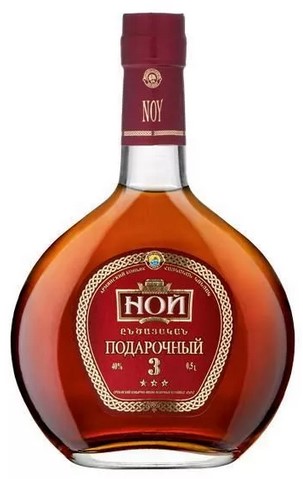
The Yerevan ARARAT Brandy-Wine-Vodka Factory produces products from local grape varieties grown in the Ararat Valley of Armenia and Nagorno-Karabakh. For intensive extraction of distillation products, first, new oak barrels are used, after six months the brandy is poured into old barrels.
The popularity of "models" of Armenian brands is achieved by the secret of blending aged spirits with water and caramelized sugar molasses. Only spring water is used, not distilled water, which gives the drink its characteristic quality.
This gives it vanilla-chocolate accents, and a slight old oak aroma appears. The color becomes brown.
Packaged in a flat glass bottle with a recessed label. Closed with wood cork
Advantages:
- pleasant aftertaste with a velvety note;
- low price for this quality;
- there is no sharp alcoholic smell.
Disadvantages:
- the type of dishes is poorly protected from counterfeiting.
Dagestan three-year
Produced by the Izberbash Wine and Cognac Factory of Dagestan.The basis of the drink is brandy from local varieties of plant materials aged three or more years. Domestic wine material gives the factory an advantage over other factories in Russia. Maturation takes place in barrels made of Dagestan oak.
The masters of blending, using the rich experience of Soviet times, create a product with a mixture of aromas of dried fruits, vanilla and alpine hay, the presence of oak and spicy notes is felt. Has a bright amber color.
Packaged in a glass bottle with an original concave bottom. There is a tide on the glass indicating the shutter speed. Cork stopper, plastic top. The label is convex-embossed, it is easy to distinguish a fake upon purchase.
Advantages:
- pleasant scent of alpine meadows mixed with oak scent;
- the price corresponds to the quality.
Disadvantages:
- rare guest in shops;
- the brand is often counterfeited.
French standard three-year
The Nizhny Novgorod plant "SORDIS" produces various types of drinks from French raw materials. Honest positioning of its activities disposes the consumer towards his products. “French Standard” is a blend of raw materials imported from France for at least three years of aging.
The factory's specialists managed to create high-quality cognac using modern technologies. The blend contains the classic color of sugar syrup, which makes it softer. It is characterized by a sharpness that is not characteristic of its "youth"; it contains notes of vanilla, shaded by prunes and chocolate. Light honey color.
Packaged in original bottle, age stamp glued to round bead. The bottleneck is engraved with the word Reserve. Wood cork completes the positive impression.
Advantages:
- pleasant aroma of the original French brandy;
- not high prices in stores;
- good protection against counterfeiting.
Disadvantages:
- sharp taste according to consumers.
Kinovsky five
The five-year-old cognac of the KiN Moscow Wine and Cognac Factory is popular among the population. Made from cognac distillates imported from France. The blend of this brand is complemented by a natural color scheme, which gives softness and honey tones.
Technological developments of the plant allowed to achieve sustainable floral accents, smoothly turning into fruity ones, with a hint of roasted nuts. Light honey color.
Packaged in a complex glass bottle on a round tide, which is the emblem of the plant, which protects the brand well from counterfeits.
Advantages:
- pleasant perception with nutty notes;
- reasonable average price in stores;
- good consumer reviews;
- sophisticated dishes make it difficult to counterfeit.
Disadvantages:
- pungent taste, according to consumers.
Troekurov
The Russian brand is produced by the Zhemchuzhina Stavropolya plant. The factory masters use the secrets of the recipe of the 19th century, when the founder of the wine production, the merchant Kuryanov, began to use the triple distillation of wine material in the production of strong alcoholic beverages.
Today, wine material is imported from Dagestan for production. Partially used and ready-made brandy brought from the same place. The blend has a floral-fruity aroma with an apple and nutmeg flavor. The color is golden amber.
The glass bottle is stylized as the dishes of the century before last, making it difficult to counterfeit.
Advantages:
- velvety effect with hints of nutmeg;
- affordable price;
- complex bottle makes it difficult to counterfeit.
Disadvantages:
- rarely present on the counter.
Kvint
Moldovan three-year Kvint produced by the Tiraspol plant "Kvint" is made from local wine material grown in the Dniester river valley. The masters of the plant pay special attention to the preparation of berries for pressing, separating the ridges from them. This eliminates the appearance of an extraneous unpleasant aftertaste.
Old French oak barrels are used for aging. The final drink is obtained by mixing up to several dozen different alcohols. To obtain a mild taste, the blending is completed with the addition of a natural color scheme based on sugar syrup.
The finished product "rests" in contact with the oak for about a year, is processed with cold. Then it is filtered and poured into glass containers. This ensures the transparency and crystal shine of the drink in the glass, which has floral and fruity accents. Light amber color.
Glass bottle with the embossed coat of arms of Moldova in the middle and the date of the founding of the plant at the bottom. Stopped with wood cork and rolled up with foil.
Advantages:
- there are shades of meadow flowers and hay;
- good protection against counterfeiting.
Disadvantages:
- overpriced according to buyers.
Koktebel
The three-year brand of the Crimean Vodka Company was born from a wine material growing on the foothills of the extinct volcano Kara-Dag in Crimea. When he was "working", he created a unique soil. Its mineral composition and trace elements give the grapes a flavor that forms the final quality.
For aging, barrels of valuable Transcarpathian oak are used. The blend has a nutty aroma and chocolate-vanilla shades. Long-lasting finish with woody nuances. The color is golden.
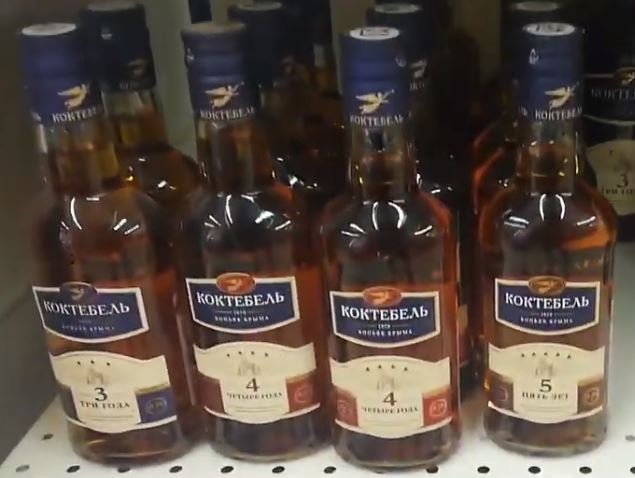
It is poured into glass bottles with a convex inscription "Product of the Crimea" with a wood cork.
Advantages:
- presents a list of the best domestically produced cognacs;
- long-lasting harmonious aftertaste;
- good protection against counterfeiting.
Disadvantages:
- rare "guest" on store shelves.
Three Asterisks
The Kizlyar Brandy Factory produces a “young” representative, which connoisseurs include in the list of the best domestic drinks. Created from local white grapes. Three-year-old raw materials form the basis of the blend, the process of adding natural color gives it a dark amber color.
The characteristic rich aroma is harmoniously complemented by hints of hay and wet oak, moving to the end in vanilla nuances.
Glassware of a classic form, the tide under the stamp with the emblem of the city makes it difficult to counterfeit.
Advantages:
- noble bouquet, long aftertaste;
- average price range.
Disadvantages:
- harsh masculine taste, slight bitterness.
Old Kakheti
This brand is exported to us by the Georgian producer “Kakhetian Traditional Winemaking”. The raw material for its production is the local grape variety "Rkatseteli".
The old way of distilling wine and aging in Kakhetian oak barrels makes the brand famous in the post-Soviet space.
A feature of the production, which gives a premium taste to the drink, is the obligatory preliminary tasting by a team of experts from scientists, famous specialists and public figures.
"Old Kakheti" of three years old is distinguished by woody notes, alternating with tones of dried fruits and chocolate-vanilla nuances. It ends with the appearance of inclusions of almonds. The color of the drink is straw.
Branded bottles, embossed inscriptions in Georgian and Russian languages reliably protect the brand from counterfeiting.
Advantages:
- traditionally high quality;
- long-lasting classic sensation of vanilla nuances.
Disadvantages:
- somewhat harsh, according to consumers.
Bakhchisarai
The Crimean Wine and Cognac Factory "Bakhchisaray" produces the cognac of the same name, highly appreciated by lovers of the strong drink of our country. The basis of the drink is alcohols obtained by distillation of local wine material and imported from Spain, Armenia and France.
They mature for three or more years in Italian and French oak barrels. The secret is to normalize the blend with natural colors based on caramelized sugar syrups.
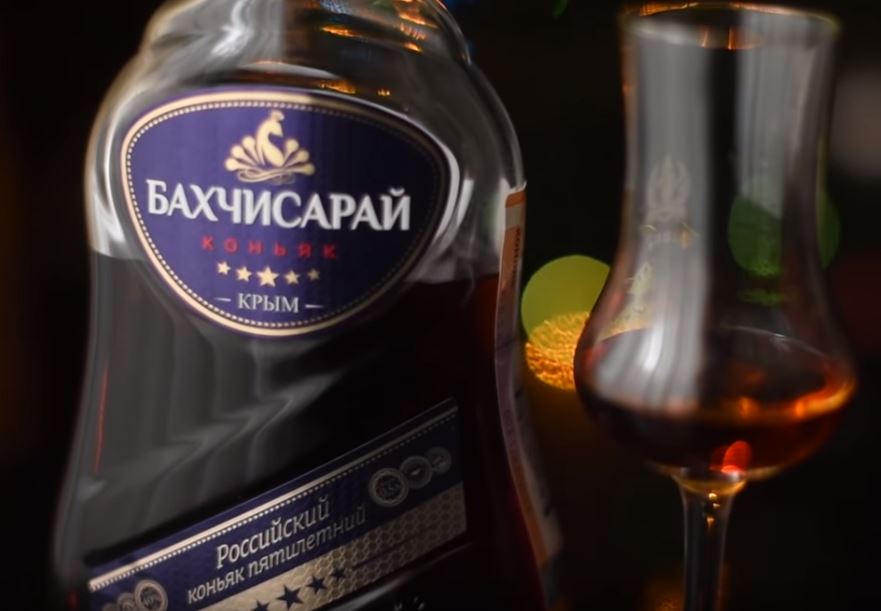
The three-year-old Bakhchisarai has a complex aroma of a mixture of oak, walnut and dried plums. The rich bouquet ends with hints of mountain flowers and herbs. The color is golden amber.
The original glass container, developed by English designers, with a convex ornament under the label should protect the product well from counterfeiting. However, there is evidence that there are lots of counterfeit drinks.
Advantages:
- represents the best budget brands from Russia;
- strength harmoniously combines with softness;
- rich bouquet of taste.
Disadvantages:
- sometimes there are lots of fakes.
Martell VS Single Distillery 0.5 L
The French cognac house Martell supplies the world market with a line of drinks that began to be produced a long time ago in memory of Louis 14, who died in the year the house was founded.
Recommended by Martell, according to European classification V.S. (2 - 4 years of aging), this is a novelty made on the basis of alcohols of one plant, that is, a "limited palette" of the source material.
Despite his youth, he received a richer and more intense soft taste, which mixes shades of old oak, dried fruit and grape aroma. The short aftertaste is characterized by citrus notes. Light caramel color.
It is bottled with a relief image of a swallow, which excludes counterfeiting of the drink and comes with gift wrapping.
Advantages:
- characteristic "French" brand;
- a wide range of citrus tones.
Disadvantages:
- short aftertaste.
Remy Martin V.S.

The cognac house Remy Martin has been producing world-famous cognacs since the early 18th century. Remy Martin V.S. not very expensive and combines the best qualities of French drinks. Produced in the Cognac region based on traditional technologies.
Continuous control through tasting ensures stability of characteristics at the final stage of production.
The taste is masculine with rich tones of dried fruits and a hint of citrus. Aging in oak barrels gives it a trace of vanilla and a golden yellow color.
The original bottle, a tide in the form of a medallion with a centaur relief, excludes a fake.
Advantages:
- rich palette of organoleptic characteristics;
- long-lasting taste with a fruity vanilla tone.
Disadvantages:
- somewhat harsh, according to consumers.
Hennessy
vsop-576x1024.jpg)
Iconic Hennessy is the best representative of French brands in the world market. During its production, a blend of several dozen brandies is made according to the technology laid down 250 years ago by the founder of the cognac house, the Irishman Richard Hennessy.
The taste palette contains echoes of vanilla-floral traces with tones of nuts, there are tones of ripe peach, wild pear and oak. Golden color, oily consistency.
The bottle has a round tide with a hand with a halberd, the coat of arms of the cognac house.
Advantages:
- tops the list of the best brands in the world;
- clean taste with hints of fruit, oak, vanilla.
Disadvantages:
- according to consumers, there is a faint smell of alcohol.
Conclusion
A review of the brands of the best cognacs on the Russian market in 2020 should help answer your questions when choosing a drink: which ones are, how much a particular brand costs, which are the best ones. The presented selection criteria should tell you which brand is better to buy.
Do not forget that the consumption of any alcoholic drink in excessive doses causes irreparable harm to your health.
If you have experience in tasting the cognacs described in the rating, tell us about it in the comments.












